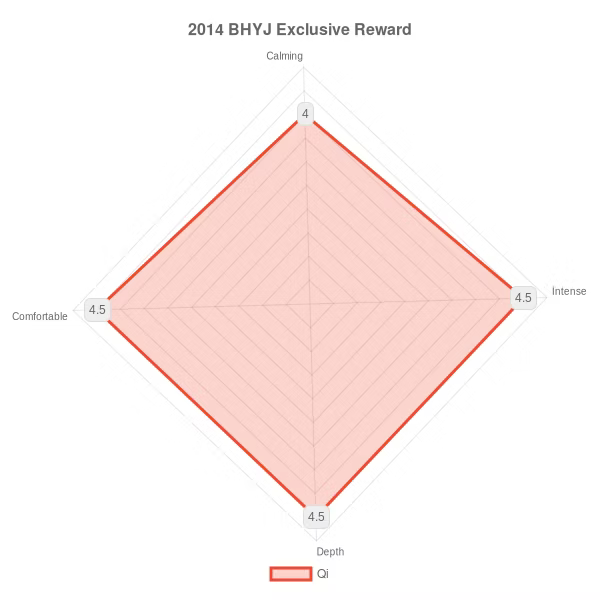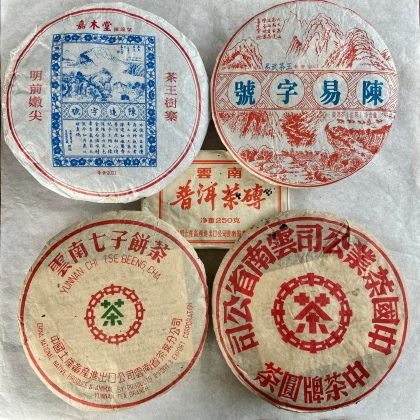Introduction
If you are new to this, watch the Detailed Beginner’s guide first.
Need a gaiwan and cups? Gongfu tea ceremony starter kit.
Need a chemical-free yixing teapot? Shoot us an email, we may be able to help.
This is the “brew along” companion set with the same teas I brew in the 5 brewing videos (Weeks 2 to 6):
-
Brew Puerh like a Pro
£100.00 – £200.00
Week 1 – Types of Puerh and what to look for
After the images you will find questions and exercises for this week.


Bitterness – a moderate level is considered pleasant, even if it’s a bit of an acquired taste
Astringency – neutral but most people will prefer balanced astringency (see “smooth”)
Aftertaste – how long does the taste/smell remains in the cup and the mouth?
Thick – is it more soupy or watery?
Patient – how many steeps does it go on for?
Aroma – both in the dry leaf and from the teapot, includes presence of flavour “high notes”
Complex – are there different layer easily recognisable? For a high rating there should be high notes
Huigan – returning sweetness from the throat, lingering in the mouth after drinking
Intensity – how much flavour is there? this is a very good indicator of a tea that will age well
Sweet – neutral though most people like it a lot
Smooth – are astringency and bitterness well balanced with sweetness and thickness? does it go down the throat easily without having to swallow?
Clean – are there any flavours that are not to do with tea? this is a serious defect and can indicate pesticide or improper processing. Most tea I drink is a 5, with the odd 4 that will “clean” up with aging. Steeping the tea for relatively long will bring out the truth.

Calming – does it bring a sensation of stillness?
Intense – how much does the tea affect your mind and body? does it cause heat, burping and/or energy? different from a caffeine rush
Depth – does it keep you interested for a long time and satisfied? does it significantly clarify your thoughts? not just “feeling high” but more “feeling transformed”
Comfortable – is there any anxiety during or after the session?
Questions and exercises
- Can you tell when a puerh has pesticide?(More details here: Pesticide in puerh)
- Do you pay attention to your throat during and after a tea session?(More details here: The throat never lies)
- Would you add any taste characteristics to the 12 I outlined above?
- Can you name a puerh that has a good amount of bitterness but low-medium astringency? And one that has too much astringency?
- How much do you value complexity over a thick-sweet taste? Do you find that as you become more experienced with Puerh you tend to value one of the two more than you used to?
- Do you find there’s a connection between how Puerh tastes and how it makes you feel?
- Brew 3-5 puerh (with your standard method) and score them (from 0 to 5) on the 12 taste characteristics (or more) and 4 Qi characteristics (if relevant for you).Writing a table with the tea name on the rows and 12 columns on a piece of paper as you brew would make this easy.
Submit your answers by clicking on the green buttons with three lines above.
Week 2 – Young sheng
Tea brewed in the video: 2021 Chen YuanHao ChaWangShu
Questions and exercises
- When is a puerh too young to drink? Does it vary by the quality, or by its area of provenance?
- How do you feel the difference between Qi and Caffeine in a young sheng?
- Has trying this method changed your overall brewing?
Week 3 – First aging stage
Tea brewed in the video: 2014 Chen YuanHao “Yiwu ChaWang” (Chen Yi)
Alternative teas: 2005 Green Mark Mengku Chawang and 2007 Youle old tree (Dry storage gentlemen)
Week 4 – Semi aged
Teas brewed in the video: 2001 Changtai Yi Chang Hao and 2003 Hong Kong Henry “Serious Formula”
There’s another relevant video where I go more in-depth about semi-aged cakes (talking more about topics like dry and natural storage, famous teas vs special orders, and why this category is the trickiest to brew and buy), it can be found at the end of the page of this tea: 1997 Menghai Red Ribbon Special Order (Dry storage gentlemen)
Week 5 – Aged
Teas brewed in the video: 1990s Menghai Special Order 8582 and 1998 Red Mark Ji Pin (More humid storage version).
Week 6 – Fully aged
Teas brewed in the video: 1980s Kunming Tea Factory 7581 and 1980s Yeun Neun “Fu Lu Gong” (sold out).

Meng sa 2014 green mark
A subpoint to the aftertaste, returuning salivation, got thay today from a 2006 Changtai Ruiming, no sweetmess but a lot of salivation, long after the last cup.